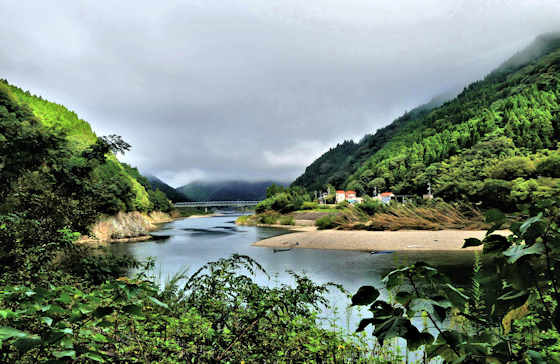Probably the first thing you notice at Tanzan Shrine is the rather unusual 13-story pagoda. Pagodas are of course Buddhist, and this was a temple and monastery complex until the government made it a "shinto" shrine in early Meiji.
The pagoda was built on top of the bones of Kamatari Nakatomi by his son Joe Fujiwara and the temple was primarily a private family mausoleum until later when it came under the wing of the Tendai sect and expanded.
Nearby is where Kamatari met with Prince Nakano Oe (later Emperor Tenji) and plotted the assasination of Soga no Iruka.
The Soga were the most powerful clan and most probably ruled Japan at that time, the Imperial family being mere figureheads (like they were for most of history). After their fall the Fujiwara ( the new family name of the Nakatomi) in essence ruled Japan for the next 1,000 years or more.
The history of the ruling elites of Japan, like many other places, reads like a gangster novel, assasinations, plots, revenge, inter-gang warfare, etc. and in truth the distinction between gangster and ruler is a very fine one indeed.
Leading away from the main building a line of torii lead to 3 shrines to Inari. There are in fact and incredibly large number of Inaris, though there are collectively lumped together as one.
There are numerous other sub-shrines within the grounds, a Shinmei Shrine dedicated to Amaterasu, a Sugiyama Shrine dedicated to Isotakeru, the son of Susano that came with him from Korea, the local Mountain God, an Okami Shrine to Suijin the water god, and a branch of Hie Shrine enshrining Oyamazumi, probably dating from the time the Tendai sect took over the temple.
When I went to Tanzan many years ago it was hard to reach, even though it is close to Asuka, though now they have built a new road directly from Asuka that I believe is open.
Tanzan is very popular during the Fall when the leaves are changing.








































